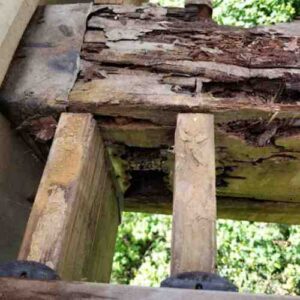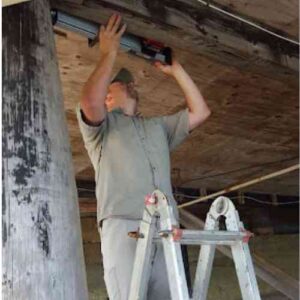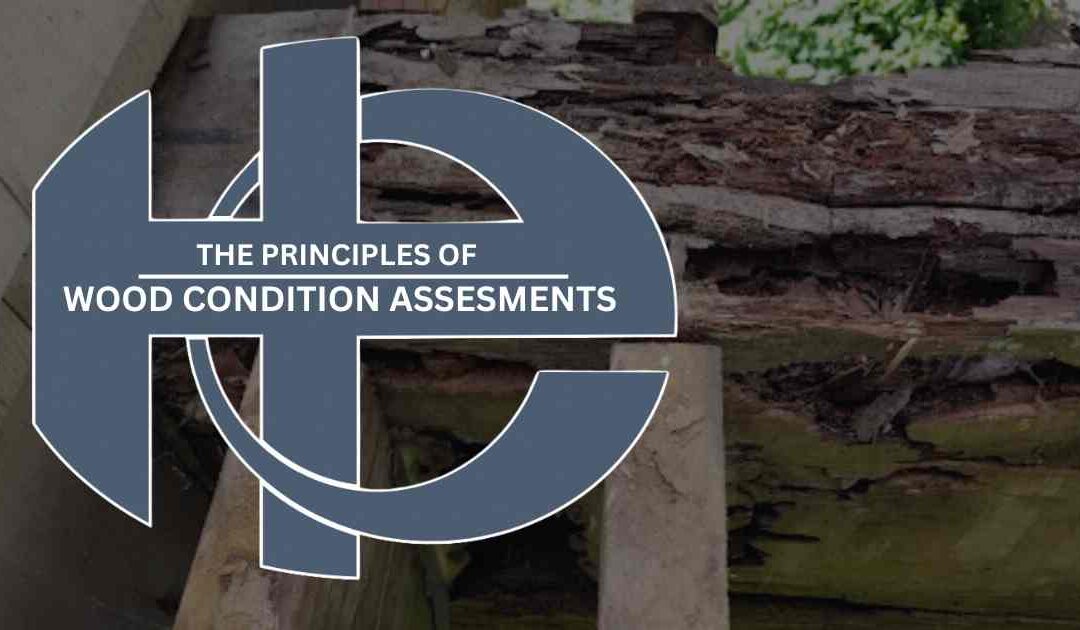In this theoretical case study, we will explore a wood condition assessment conducted on a historic residential structure. The objective of the assessment was to determine the extent of structural deterioration in the wood members and provide recommendations for maintenance, repair, or replacement to ensure the longevity and safety of the building.
Problem: Structural Deterioration in Wood Members
The historic residential structure, constructed over a century ago, exhibited signs of aging and wear on its wood members. The owner recognized the importance of conducting a comprehensive wood condition assessment to identify potential structural issues and prioritize necessary repairs.
Solution: Condition of Wood Member Assessment
HECO Engineers, an engineering firm specializing in structural assessments, offers a comprehensive solution to assess the condition of wood members in structures. By employing a combination of visual inspections, nondestructive testing, and destructive testing, HECO provides accurate and detailed assessments to clients.
Methodology
The wood condition assessment utilized a combination of visual inspection, nondestructive testing, and destructive testing techniques to evaluate the health of the wood members. The level of assessment changes based on the project and the goals of the client.
Visual Inspection

Structural Deterioration in Wood
A visual inspection is the most basic method and is usually done before any other testing method. Our team of experienced engineers conduct a thorough visual inspection of the wood members. They carefully examined the exterior and interior surfaces for signs of deterioration, including fungal growth, decay, water damage, missing members, alterations, and checks and splits. Visual observations help locate areas of potential deterioration, providing initial insights into the condition of the wood.
Nondestructive Testing
Nondestructive testing techniques are employed to uncover hidden deteriorations and help determine the extent of damage in the wood members. These are generally done, before implementing destructive testing as they can give more information with limited cost than just a visual inspection.
Sounding
Generally, using a hammer, the inspectors perform sounding tests by tapping the wood members and listening for dull or hollow sounds. This technique helped identify areas of rot and decay within the wood structure.
Moisture Content Inspection
A moisture meter was used to measure the moisture content in the wood. Moisture levels above 20% indicated the possibility of decay, with serious decay occurring when levels exceeded 30%.
Destructive Testing
To supplement the initial investigations and gather more in-depth information, selective destructive testing methods were employed. Destructive testing is generally the most expensive testing and is usually limited to members that require specific information for repairs or analysis.
Probing

Structural Probing
A moderately sharp tool, such as a knife or awl, was used to probe the wood members. Probing allowed inspectors to locate decay near the surface or within splits and checks, differentiating between decay and softened wood.
Wood Properties Testing
In historic structures, often there is a lack of information of the properties of the wood that was utilized in the structure. To perform an analysis of the structure, these properties are often needed. When required, some sections of the existing wood members can be sent to a lab to be tested for these properties.
Drilling
Inspectors used a power drill or hand drill with a 3/8 inch to ¾ inch diameter bit to drill inspection holes in areas suspected of decay. Wood shavings observed during drilling were examined for signs of decay. Thickness gauges were used to measure the shell thickness, and wood dowels treated with preservatives were inserted into the inspection holes to limit future decay.
Coring
An increment borer was utilized to extract cores from areas presumed to have voids or decay. The extracted cores were evaluated to determine the depth of voids, examine the wood for decay, and assess the depth of preservative treatment. Wood plugs were used to fill the coring holes and prevent moisture and insect entry.
Alternative to Testing Wood Members
Replacement
Sometimes it is simply cheaper to replace the wood than to perform destructive or nondestructive testing. The members that need replacement can be discovered with non-destructive testing.
Conclusion and Recommendations
By conducting a thorough wood condition assessment, HECO Engineers provided the owner of the historic residential structure with comprehensive insights into the health of the wood members. The detailed assessment report included observations, test results, and recommendations for maintenance, repair, or replacement.
This allowed the owner to prioritize necessary repairs based on the urgency of addressing decay, water damage, and structural vulnerabilities. By taking a proactive approach and addressing these issues, the owner not only preserved the structural integrity and historical value of the building but also mitigated the risk of further deterioration and potential structural failure.
The assessment report serves as a valuable tool for budgeting, planning, insurance purposes, property valuation, and future maintenance planning, ensuring the ongoing stability and longevity of the wood components. Through their expertise and collaborative partnership with the owner, HECO Engineers played a vital role in providing accurate assessments and guiding the preservation efforts of this architectural gem.
HECO Engineers provides owners of buildings of all types with comprehensive Wood Condition Assessments to identify structural integrity and provide recommendations for maintenance, repair, or replacement. Contact HECO Engineers today for a FREE 30-minute consultation to discuss your project requirements and concerns.
Click here to view more HECO Engineer projects.
Phone: (208) 642-3304
Web: https://hecoengineers.com/
HECO Corporate Office: 32 N Main St. Payette, ID 83661
HECO Nampa Office: 5700 E Franklin Rd, Suite 160 Nampa, ID 83687

